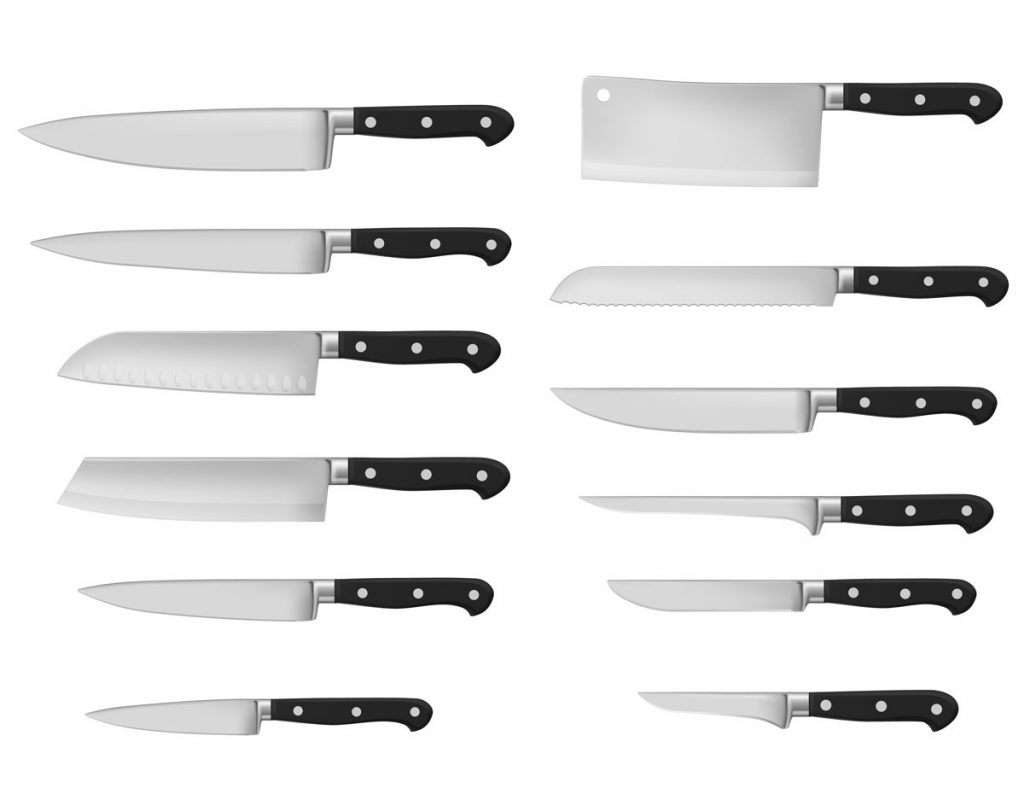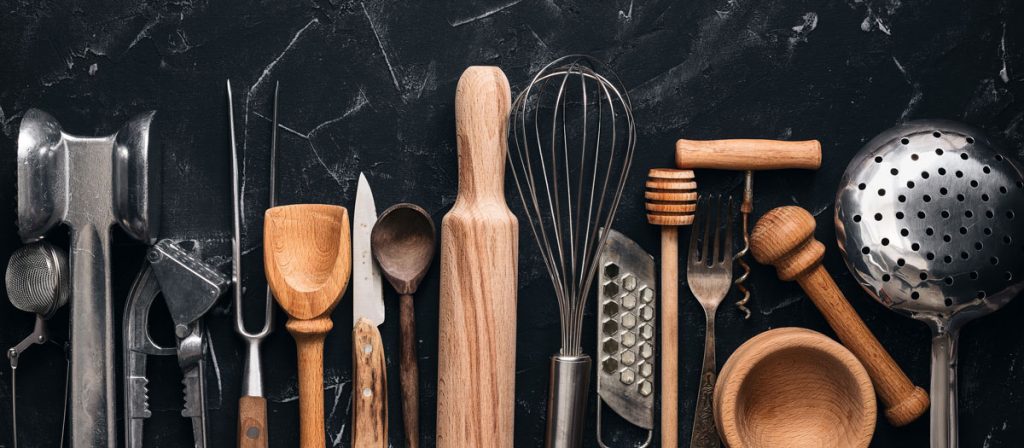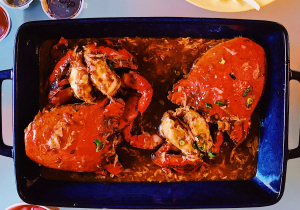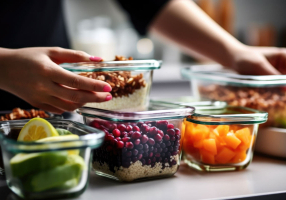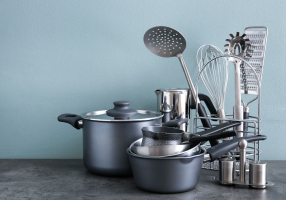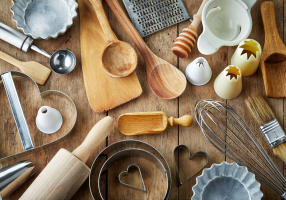Top 7 Long-lasting and Affordable Kitchen Utensils
Hey there, fellow food enthusiast! Looking to stock your kitchen with reliable cooking tools without blowing your budget? Well, you’ve come to the right place.
Below we’ve compiled the definitive list of affordable kitchen bpa free utensils that every home cook needs in their culinary arsenal, whether you’re a beginner or experienced chef.
From essential knives and pans to handy silicone gadgets and sturdy prep tools, we’ve got you covered. These are the true kitchen workhorses that will make cooking fun, easy, and wholesome meals an absolute breeze. Time to get equipped!
Trusty Stainless Steel Knives
First and foremost, a quality set of stainless steel knives should be at the top of any aspiring home chef’s utensil list. Their durability, versatility, and wallet-friendly price make them a no-brainer purchase. Here’s a closer look:
Stay Sharper For Longer
Stainless steel blades are designed to retain their sharp cutting edge through years of slicing, dicing, and chopping. This durable material can withstand heavy daily use without becoming dulled or damaged. With just occasional honing and sharpening, your stainless knives will be ready to prep mountains of veggies or carve roasts with precision.
Resist Corrosion and Rust
Stainless steel alloys contain chromium that forms an invisible passive layer protecting the metal from oxidation or rusting. So you don’t have to worry about your stainless knives corroding or becoming discolored from exposure to foods or water during washing.
Comfortable, Ergonomic Handles
Look for stainless knives with handles designed for comfort and control. Contoured, triple-riveted handles made of durable polymers or wood provide a secure grip to help prevent slipping and accidents. Ergonomic handles reduce wrist strain for easy, fatigue-free cutting and chopping.
Budget-Friendly Cost
While ultra-high end forged knives can run several hundred dollars apiece, you can find very well-made stamped or die-cast stainless knives for under $50 each. This makes it easy and affordable to acquire a full set of essential knives that will serve all your food prep needs.
Workhorse Multitaskers
A good 8-10 inch chef’s knife, 5-6 inch utility knife, and 3-4 inch paring knife are true kitchen multitaskers. Their razor-sharp stainless blades can take on the vast majority of cutting, slicing, and chopping tasks. Round out your knife block with serrated bread and carving knives for increased versatility.
FAQ for Stainless Steel Knives
What are the must-have stainless steel knives for home cooks?
At a minimum, a chef’s knife, utility knife, paring knife, serrated bread knife, and carving knife.
How often should you sharpen stainless knives?
About once a year is ideal, or more frequently if you notice dullness setting in. Use a whetstone, electric sharpener, or professional service.
Can you put stainless steel knives in the dishwasher?
While it won’t ruin them, hand washing is gentler to help knives retain their edge.
Non-Stick Pans
Another essential utensil for any home chef is a durable non-stick pan set. When chosen wisely, non-stick pans offer reliable performance and easy cleaning for years to come. Here’s what to look for:
Reinforced Non-Stick Coatings
Seek out non-stick pans made of anodized aluminum or ceramic-reinforced coatings. These are far more scratch and chip resistant than plain Teflon. High quality modern non-stick coatings can maintain their food release properties for 5+ years with proper care.
Even and Efficient Heating
Ensure your non-stick pans are designed with metal cores, bases, or discs that enable even heat distribution. This prevents hot spots and cold spots that can lead to uneven cooking. Efficient heating also means fewer burnt spots and less need for excessively high stove temperatures.
Durable Construction
From riveted stainless steel handles to securely attached bases, inspect non-stick pans for durable design details that indicate quality and longevity. Flimsy pans that warp or degrade quickly are both frustrating and wasteful.
Tempered Glass Lids
Lids are a must to lock in moisture and flavor when simmering or braising. Tempered glass lids allow you to peek inside without releasing heat and moisture. They’re oven safe and crack resistant to serve you for the long haul.
Diverse Pan Sizes
Look for non-stick sets that include both skillets and saucepans in an array of sizes. An 8″ and 10″ skillet plus 1, 2, and 3 quart saucepans will handle everything from frying eggs to preparing sauces and one-pot meals.
FAQ for Non-Stick Pans
How long does quality non-stick cookware really last?
With proper care, at least 3-5 years of reliable performance before degradation, and often much longer.
What’s the healthiest, safest non-stick cookware?
PTFE-free ceramic and anodized aluminum pans made without concerning chemicals like PFOA.
Can non-stick pans go in the oven?
Some can, but check manufacturer guidelines on maximum oven safe temperatures. Uncoated handles may become hot.
Silicone Utensils
Another category of utensils that every home chef should have on hand is heat-resistant silicone tools. Here’s a look at their key benefits:
Protect Cookware Surfaces
Soft, flexible silicone won’t scrape or scratch delicate non-stick coatings the way metal or hard plastic can. These utensils are ideal for use with non-stick skillets and saucepans.
Withstand High Temperatures
Quality food-grade silicone remains stable up to over 400°F. That means silicone tools are safe to use for high heat cooking tasks like frying or sautéing. They also won’t melt in the dishwasher.
Hygienic and Stain Resistant
Silicone’s non-porous surface won’t absorb stains or hold onto food odors. Silicone utensils come sparkling clean from the dishwasher every time.
Gentle on Cookware
The flexibility of silicone heads scrapes bowls and pans clean without damaging their cooking surfaces. Their softness also makes them gentle options for non-stick bakeware.
Lightweight Comfort
Silicone utensils are lighter than metal equivalents, reducing wrist strain during extended prep work. Their smooth surfaces feel comfortable in the hand when cooking. Look for silicone utensils with large, easy to grip handles and heads available in a variety of shapes and sizes. Common tools include spoons, spatulas, turners, tongs, and whisks.
FAQ for Silicone Utensils
Can you use silicone utensils on non-stick pans?
Absolutely, silicone is an ideal soft material that won’t harm the coating.
Are silicone kitchen tools BPA-free?
Most are, but double check manufacturers’ information if this is a concern.
How do you clean silicone utensils?
They’re dishwasher safe but can also be hand washed with warm soapy water.
Wooden Cutting Boards
No kitchen is complete without one or more good wooden cutting boards. Here’s a breakdown of why wood is king when it comes to cutlery prep:
Naturally Antimicrobial
Research shows that wood’s natural capillary action pulls bacteria away from the surface, while lingins and phenols found in wood actually kill bacteria. This makes wood more sanitary than plastic for food prep.
Preserves Knife Sharpness
Wood’s slight natural softness is gentle on cutting edges. Cutting on wood helps knives retain their sharpness much longer compared to harder surfaces like stone, granite, or stainless steel.
Sturdy and Stable Platform
Quality wooden boards form a sturdy, stable surface that makes slicing, chopping, and dicing easy. Wood also absorbs impact to protect cutting edges.
Timeless and Elegant
The rich grains and classic look of a wooden cutting board add a touch of elegance to any kitchen. Teak, maple, walnut, and hinoki wood boards complement both traditional and contemporary kitchen decors.
Long-Lasting with Proper Care
While wooden boards do require a bit more TLC than plastic, with proper upkeep they can serve faithfully for many years. Regular oiling maintains their moisture balance to prevent cracking or warping.
FAQ for Wooden Cutting Boards
What are the best woods for cutting boards?
Hard maple, walnut, teak, and hinoki are top choices that are knick-resistant and naturally antimicrobial. Avoid soft woods.
Should you have separate boards for raw meat?
Yes, keeping a designated veggie and meat board helps prevent cross-contamination in the kitchen.
How do you clean and care for wooden boards?
Hand wash gently with mild soap and water. Allow to fully dry. Apply food-grade mineral oil monthly.
Stainless Steel Mixing Bowls
Stainless steel mixing bowls are another versatile kitchen staple no home chef should be without. Here are some reasons why metal bowls are so useful:
Unbreakable Durability
Stainless steel won’t crack or shatter like glass bowls, providing reliable durability and longevity through years of use. Metal bowls are kid and kid-at-heart accident proof!
Lightweight Maneuverability
Quality stainless steel mixing bowls have a good heft to them while remaining lightweight enough for easy handling. Their smooth rounded sides make whisking batters or folding ingredients a breeze.
Nesting Storage Efficiency
Look for stacking, nesting bowl sets that conserve precious cabinet space. Nesting allows for tidy storage of multiple sizes all in one small footprint.
Even Heat Distribution
The responsive heat conductivity of stainless steel makes these bowls ideal for double boiler melting or for whipping up custards on the stovetop. No hot spots here!
Endless Multitasking
From mixing and prepping to refrigerating leftovers and whipping cream, stainless bowls assume countless kitchen roles. Their durability also means they’re ideal for taking dishes on the go to potlucks or parties.
FAQ for Stainless Mixing Bowls
Are stainless steel mixing bowls oven safe?
Yes, stainless steel bowls are safe for both conventional and convection ovens up to around 500°F.
Can stainless bowls go in the microwave?
Yes, but only when empty. Never microwave food directly in metal.
Do stainless steel bowls require special care?
Just wash with standard dish soap and water. Avoid abrasive scrubbers to prevent scratching.
Nylon Cooking Utensils
A collection of nylon cooking utensils like spoons, turners, and tongs are another kitchen essential. Here’s what makes nylon such a popular material:
Protection for Non-Stick Surfaces
Nylon’s smooth surface won’t scratch or scrape delicate non-stick coatings. These tools are gentle choices for use with non-stick pans.
Lightweight Maneuverability
Nylon utensils typically feature large openwork heads and lightweight construction that make flipping, stirring, and serving a cinch. Their lighter weight also means less arm fatigue during extended cooking tasks.
Resilient to Heat
High-quality nylon withstands temperatures up to 400°F without warping or melting. Nylon tools maintain their integrity in the dishwasher and can also go into warm ovens.
Easy Cleaning
Food doesn’t readily stick to nylon’s slick surface. Soiled nylon utensils come out sparkling clean in the dishwasher.
Inexpensive Versatility
You can purchase an entire set of essential nylon utensils like spoons, ladles, and spatulas for under $20. That makes nylon a budget-friendly alternative to pricier silicone or wooden tools.
FAQ for Nylon Cooking Utensils
What’s the highest temperature nylon utensils can withstand?
Around 400°F; they can be placed in warm ovens but not under broilers.
Do nylon cooking utensils contain BPA?
Most today are BPA-free, but double check with manufacturers to be sure.
Are nylon utensils scratch resistant?
No, nylon can scratch over time with extensive use. But it won’t scratch non-stick coatings with proper care.
Glass Storage Containers
Last but not least, no kitchen is truly complete without a quality set of glass storage containers. Here are some benefits of glass over plastic food storage:
Non-Porous Surface
Unlike plastic, glass won’t absorb stains, flavors, or odors from foods. This keeps both your leftovers and containers fresher.
Crack and Shatter Resistant
Modern tempered soda-lime glass storage containers are reinforced for enhanced durability and impact resistance. Though chips and breaks can happen, glass is less prone to warping and cracks than plastic.
Visibility
The clear, see-through nature of glass makes it easy to identify container contents without having to open them up. This saves time hunting for ingredients or leftovers.
Naturally Non-Toxic
Glass is free from potentially harmful chemicals like BPAs, phthalates, and PVCs that can leach into foods from some plastic containers. This offers peace of mind your leftovers aren’t contaminated.
Oven and Freezer Safe
Borosilicate glass containers withstand freezing, thawing, baking, and reheating without compromising their integrity. The same can’t always be said for plastic containers.
Sustainability
Glass is ecologically friendlier than single-use plastics. It’s also fully recyclable at the end of its lifecycle to be remade into new glassware.
FAQ for Glass Storage Containers
Does glass or plastic make better food storage containers?
Glass is generally considered safer and more eco-friendly. But plastic is more lightweight.
How long do glass storage containers last?
With proper care, quality tempered soda-lime glass containers should provide 5-10 years of regular use.
Can glass containers go from freezer to oven?
Tempered glass can withstand this thermal shock, but check limits on the lids. Not all lids are oven safe.
Equipping Your Culinary Headquarters with these Kitchen Utensils
There you have it—all the essential kitchen utensils an aspiring home chef could ever need. From durable stainless knives to versatile silicone spatulas, these everyday cooking tools truly deserves a place of honor in your culinary arsenal.
Keep this checklist handy as you shop to curate your kitchen into a workspace fully stocked for recipe success. Having the right gear makes all the difference when it comes to finding joy in preparing flavorful, nourishing meals for yourself, family, and friends.
Before you know it, you’ll be cooking and baking with confidence, skill, and enthusiasm. Now tie on that apron, grab your equipment, and let’s get cooking! The joy of DIY meals awaits.

